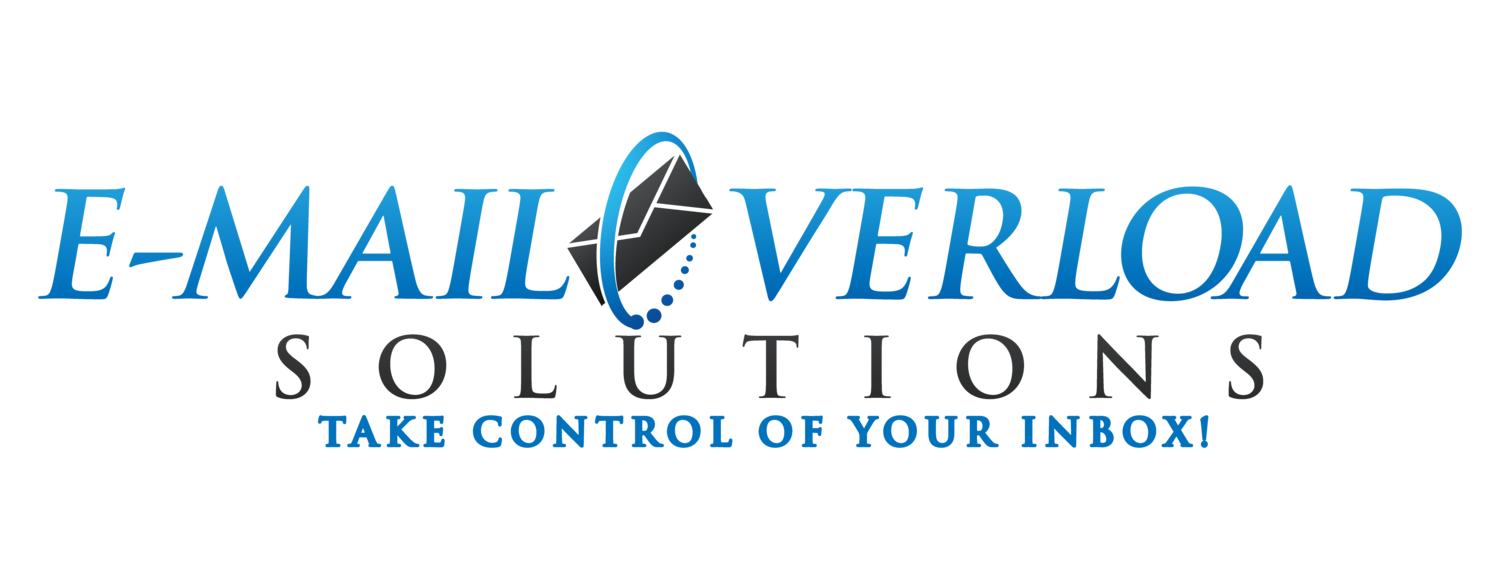Increasing Productivity Through Email Protocols
/Our world has adapted fairly well to new technologies and changing office settings. However, as much as the office has tried to increase the speed of production and decrease many of the small and menial tasks of the past, it still struggles to increase productivity.
With new technology and innovation also comes new distractions and new hurdles to overcome. Many offices are starting to realize that, although production might be up, that doesn’t mean their employees are constantly engaged and working their hardest throughout their shift. Although it’s impossible to expect someone to work non-stop from 8 or 9 in the morning until 5 in the evening, there are some things that offices can do to diminish many of the most common distractions.
Let’s look at how offices and manager can adapt their communications to better suit the company, while also better suiting their employees through diminishing distractions and increasing productivity.
Productivity Shortfalls due to Email Overload
By far, one of the biggest office distractions in the modern world is electronic communication. Whether it’s email or instant messenger, social media or texting, your day can easily be consumed and look like this:
● You’re constantly on high alert to answer messages as fast as possible
● You’re trying to stay in-tuned with what’s going on in the office
● You’re anxiously awaiting responses to important outgoing messages you’ve sent
By constantly checking inboxes and other notifications, productivity can come to an abrupt halt.
As Arizona State University highlights, communication is rapidly changing in the office, and often for the best — workforces can easily keep their employees informed, and employees can be more effective with transparent and near-constant communication. However, it does create additional challenges, and most employees are constantly inundated with different forms of communication: namely email, text messages, instant messenger, and more. Even across generations — both young and old — most communication is turning entirely to digital, farther away from phone calls and face-to-face chats.
One of the largest reasons for this shift happens to be the increase in remote employees for many businesses. As workforces are adapting to some of the latest workforce trends, employers will be faced with the challenge of keeping their remote employees engaged and informed alongside their in-office employees. However, this also creates an additional challenge of the potential for communication or email overload, as those remote employees are constantly on high-alert for important updates and messages.
Thus many businesses of today are faced with this challenging problem: how can you diminish the impact of email and electronic communication distractions to increase productivity without actually decreasing the amount of information being shared?
Solutions for Increasing Productivity
The best option for businesses and managers is to set up distinct and clearly defined email and communication protocols that apply across their floor. Although these rules or guidelines will only apply to emails and other forms of electronic communication, they can greatly impact the general productivity of all employees in many different areas. Communication simply takes up too much brain power, and thus can ruin the flow of productive energy.
Additionally, these protocols can be a suggestion, as many employees may prefer different options for how they manage and operate their communications. Keeping options flexible can help each employee meet their own needs.
Diminishing Email Overload
Information and email overload can be difficult beasts to tame, but they aren’t impossible. To start, consider how you communicate on a daily basis.
Do you use in-office communication apps?
How do you communicate in the office?
How many emails do you get per day?
What is your typical day-to-day routine?
And how can you improve your routine, or what areas do you notice are in need of improvement?
Combating information overload requires self-awareness and a certain level of acceptance that your routine has failed you up until now. It also best to make the change for yourself, before you decide on what’s best for others.
As the Information Overload Research Group noted in 2016, there are certain guidelines you can keep in mind to try to help you change your own communication, productivity, and information tactics. Do you best to follow these tips:
● I will not email someone and then two seconds later follow up with an IM or phone call.
● I will refrain from combining multiple themes and requests in a single email.
● I will make sure the subject of my email clearly reflects both the topic and urgency of the missive.
● I will read my own emails before sending them to make sure they are comprehensible to others.
● I will not overburden colleagues with unnecessary e-mail, especially one word replies such as “Thanks!” or “Great!”, and will use “reply to all” only when absolutely necessary.
Once you can work on implementing those tactics, you can then try to double-down on controlling your own communications and creating more rigorous rules for both yourself, and other coworkers or employees within your company.
Try these rules for starters:
1. Create protocols to help you stay productive throughout the day.
As you’re well aware, not all conversations are going to be urgent. So to help you control what emails take up your time and disrupt your flow, you can create specific criteria for emails that you will respond to throughout your day. These can always be flexible, but the idea is to make sure you’re only responding to emails when they’re not stalling your projects or further causing you to procrastinate.
Some common criteria include:
● Time Management: You can use this if you do your best work at a certain time of day, and so the other parts of the day (morning, lunch, or evening) are devoted to cleaning out your inbox and responding to messages.
● Action or Time Sensitive Requests: Only respond to emails that have a clear and articulate call to action or demand, and if anything seems vague or unclear, you can ask for clarification but move along. You can also ask that if any items are urgent or sensitive, that the sender puts that information in the subject line so that you can know immediately if it’s time sensitive or a top priority. Of course, also make sure that you are always remaining clear on your end of the conversation.
● Contact-Specific Requests: This idea is to help you limit who you respond to in a timely manner. For example, clients, your manager, and the company head are all very important people that might need your prompt replies. However, coworkers and others might not have as urgent of a request, or won’t take priority over your daily tasks. You can always save their messages for when you have more time to respond.
2. Keep your inbox organized.
Inbox organization and cleanliness is vital to minimizing the impact emails have over your day. Crowded inboxes can easily become overwhelming and stressful, and almost all email hosts offer some form of organization, so why not use it? Whatever your preferred form of organization may be, the more you practice keeping your inbox clean, the easier it will be to respond to urgent messages and keep your unread messages down to zero.
3. Set boundaries for yourself and communicate those boundaries to managers and coworkers.
Once you’ve started implementing your own communication rules, you can start to explain your rules to others around you. You can also set up automated responses that explain your email preferences, such as:
● I will only answer emails from 8-9am. Otherwise, for more urgent matters, you may reach me at my office number: xxx-xxx-xxxx.
● If your email is urgent, please include the tags “Urgent” or “Time Sensitive” in the subject line, otherwise I may miss your message.
● I will be unable to respond to messages after 12pm today, due to an urgent client request. Please be aware it may take me 1 to 2 business days to respond, depending on urgency. Thank you for your patience.
For your closest contacts or the people that may need to stay in the loop, you may even decide to share your daily calendar with them so they can know when you’re available to answer emails. Setting boundaries and explaining your reasoning can not only help others understand how to construct emails sent to you moving forward, but might even inspire them to start doing the same. Eventually, you may be able to implement these suggested tactics across the business.
4. Trim down your subscriptions and work to keep your inbox at zero.
The best way to keep your email inbox clean and organized is to cut back on the people that have your email. Especially for work purposes, you should never (or rarely) give out your work email for subscriptions, online shopping, or newsletters. They tend to merely clog up your inbox, and can often bury more urgent messages.
Instead, do your best to unsubscribe from any unimportant newsletters or subscription lists, and limit who has your email going forward. If they’re trying to sell you something, then it’s probably not worth your time. If you have to, you can create a separate “spam” email account that you can use for subscriptions and online shopping.
Taking Back Your Time and Productivity
Productivity in the office is a vital and often scarce resource in today’s modern office. However, combating email overload can be a fairly easy solution to not only free up some of your time, but also help you stay on task and “in the zone” so that you’re performing your best throughout the work day.
Do your best to change your habits, clean out your inbox, and inspire others with your own protocols that you set for yourself. With time, the adjustment will become almost second nature, and you’ll notice that you have more attention, time, and energy saved for those more important tasks on your docket.












